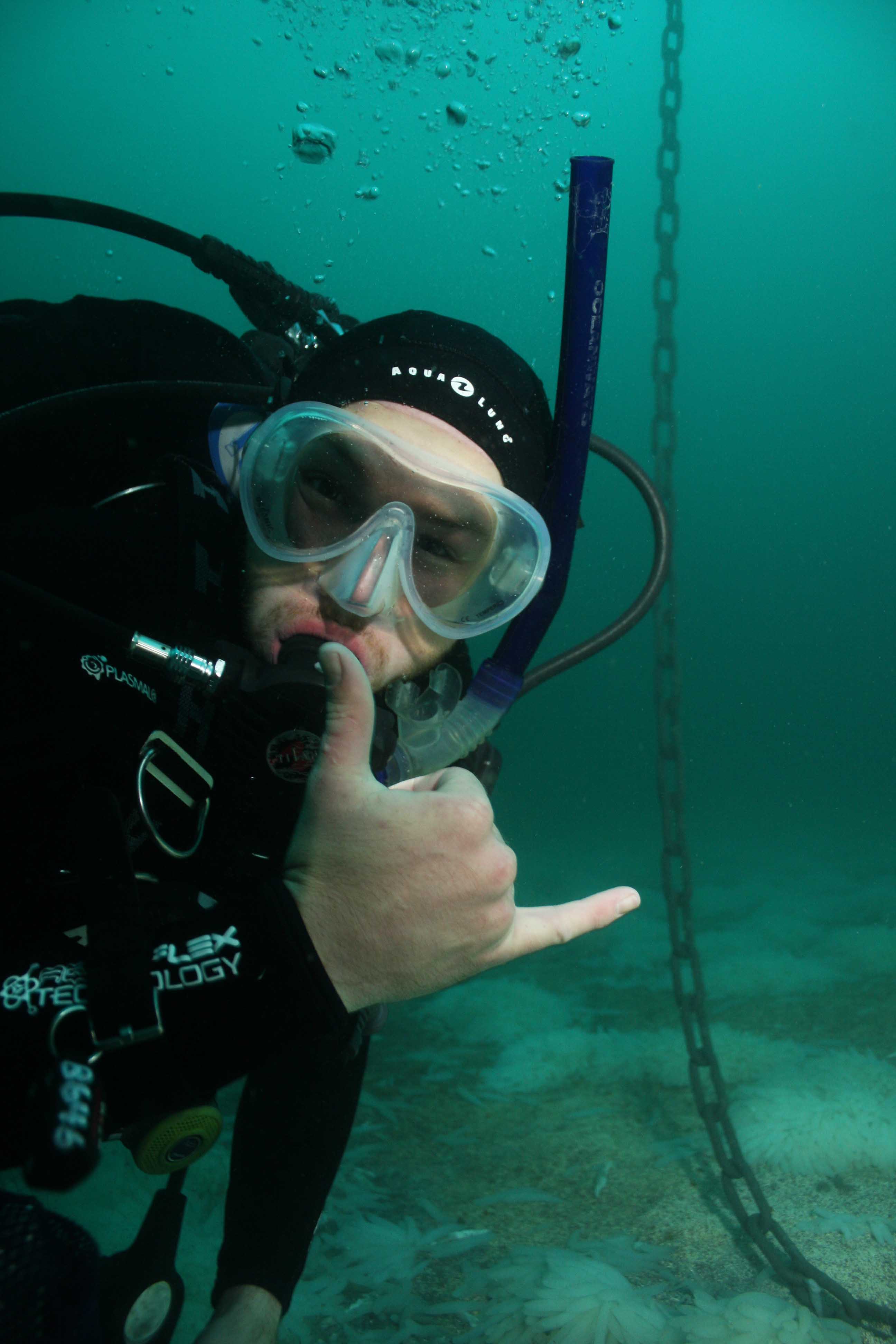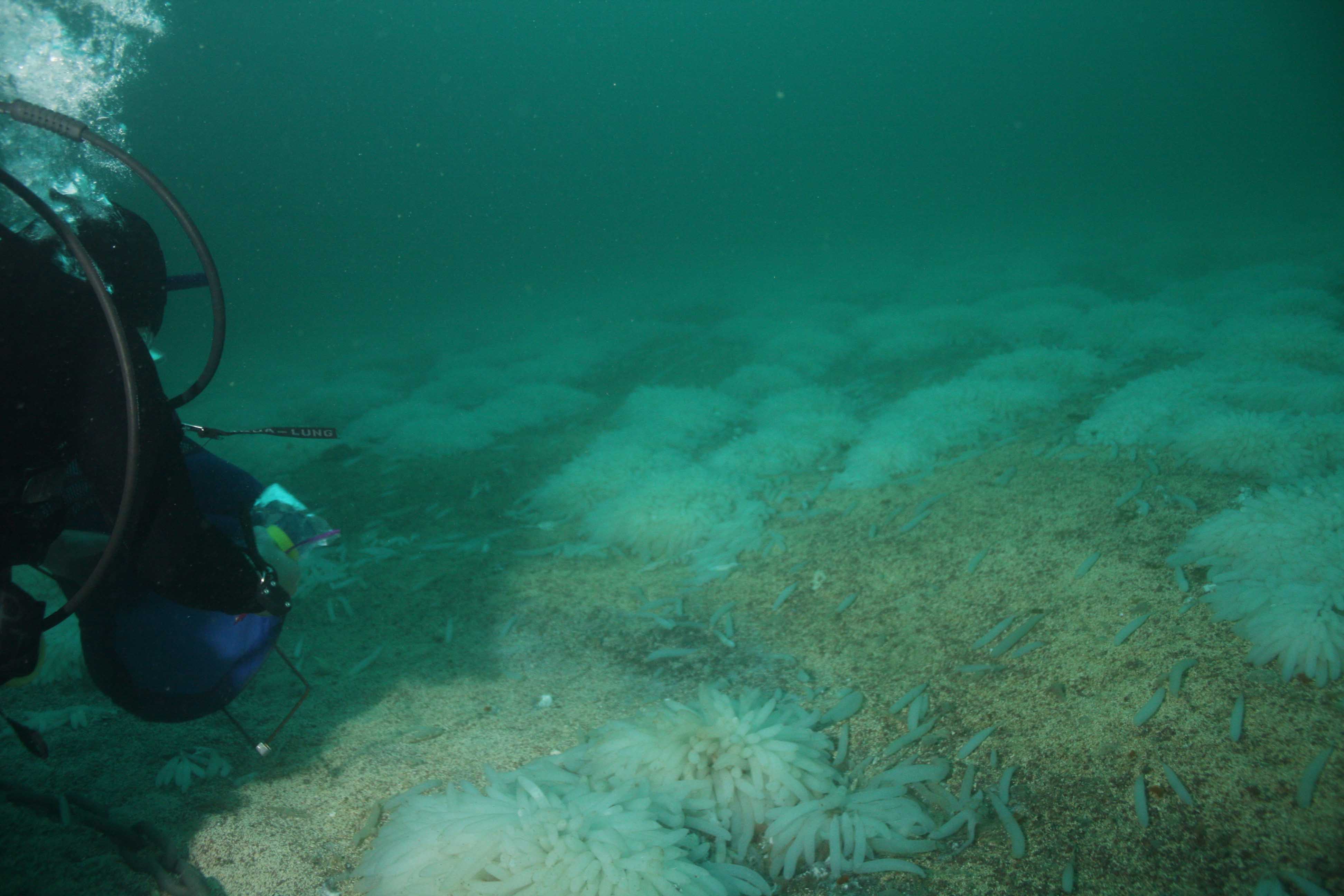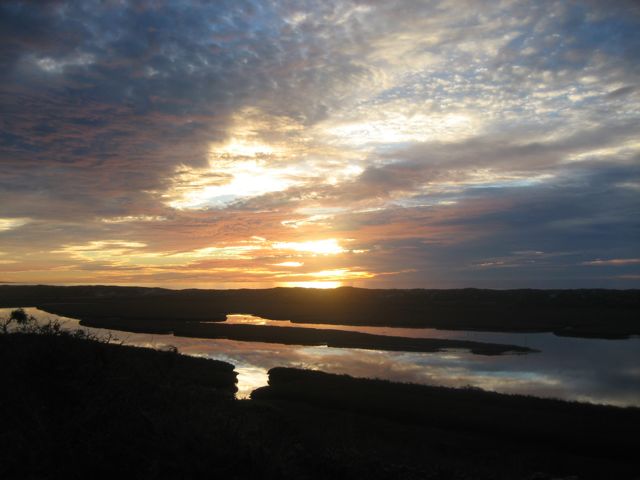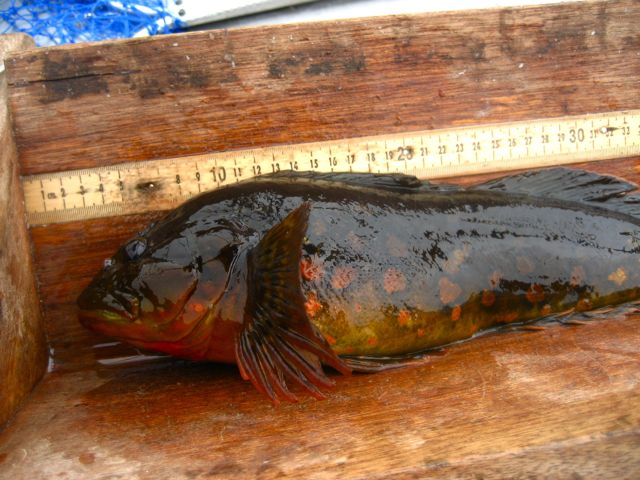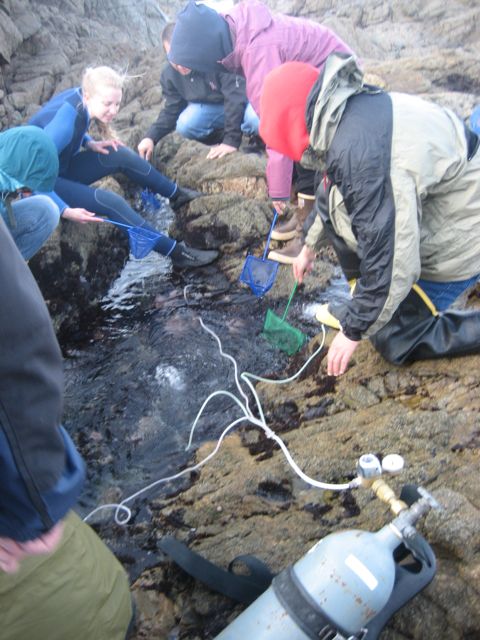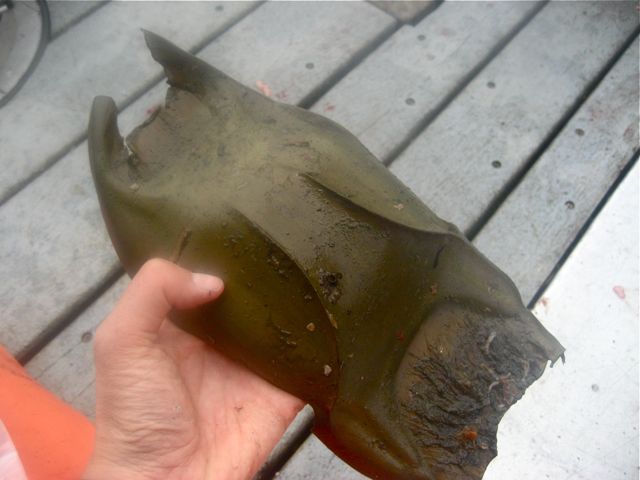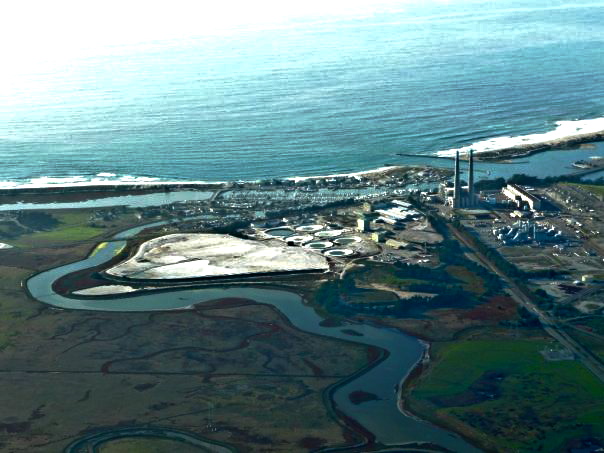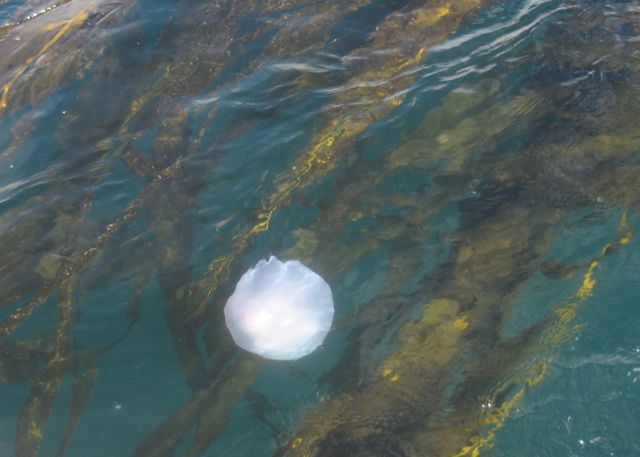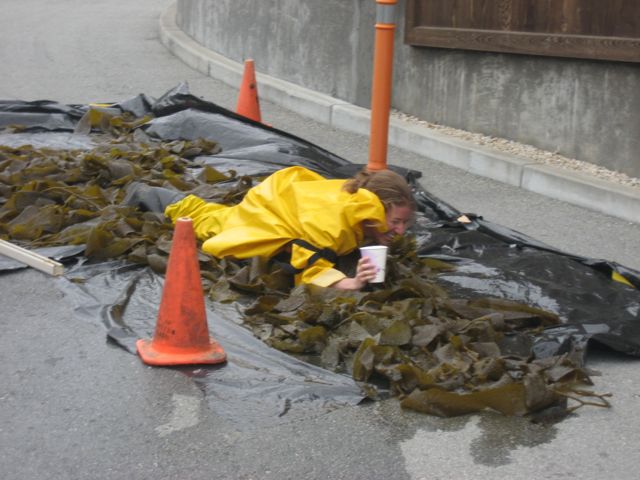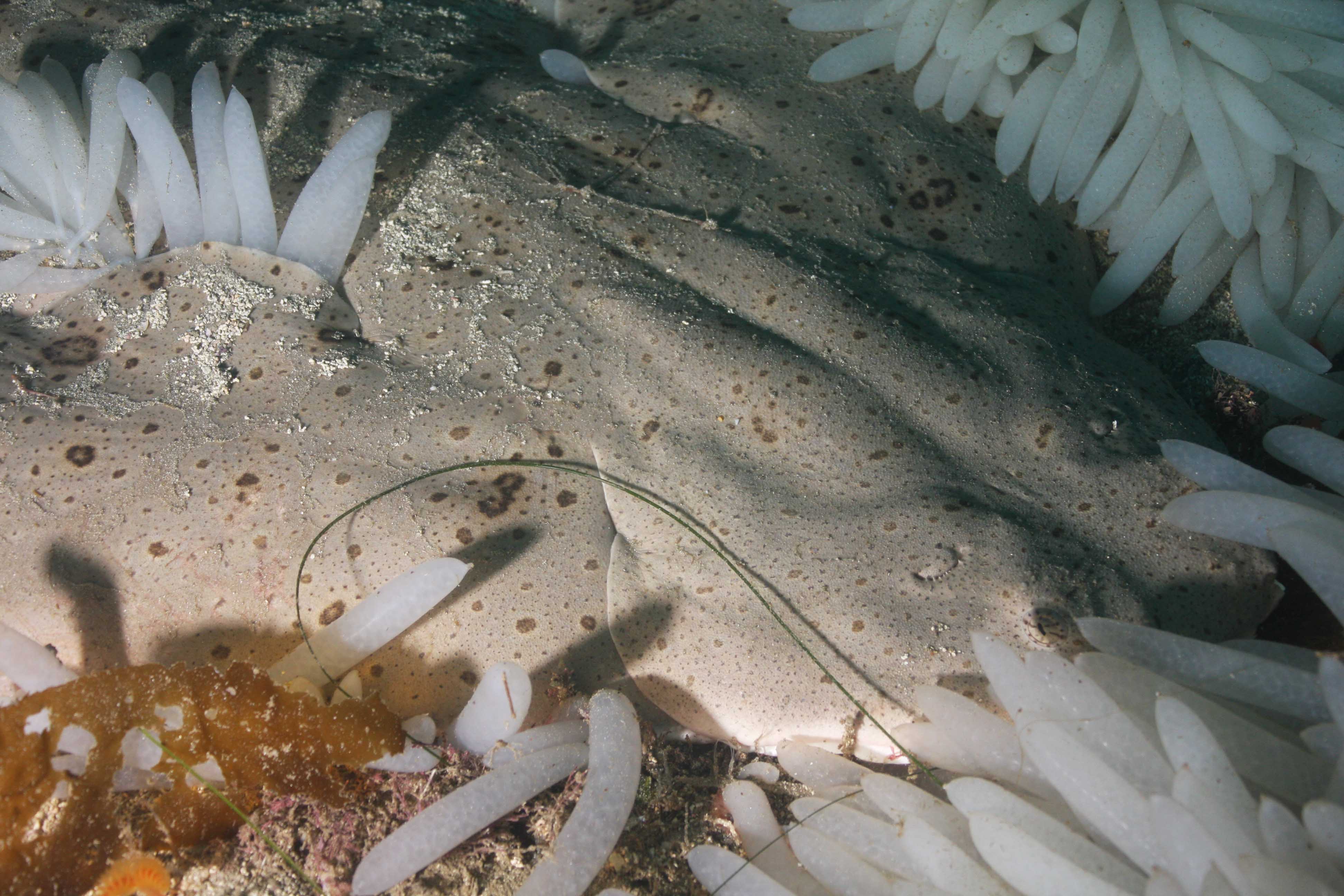
The large amount of California Market Squid eggs means a feast for many other organisms in the bays around Catalina Island. Many fish, invertebrates and sharks such as this Angel Shark will use this abundant food source during the winter. I almost asked the Angel Shark to share, but realized there will hopefully be many squid and squid eggs for the future.


